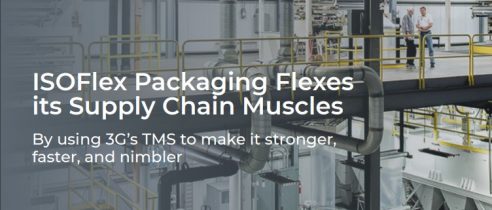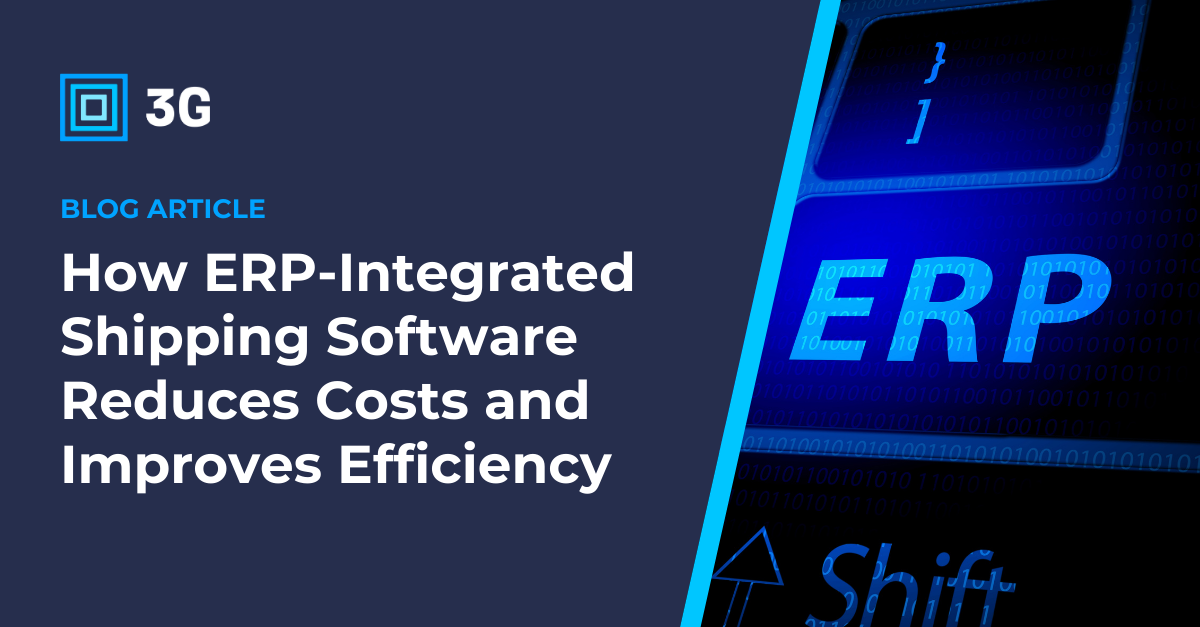Unlocking Cost Savings and Operational Efficiency Through ERP Integration
Managing shipping and logistics can be complex and costly but integrating shipping software with your Enterprise Resource Planning (ERP) system offers a powerful solution. Businesses that connect their shipping and transportation management processes directly into their ERP gain efficiency, reduce costs, and improve decision-making through automation and real-time data.
Here’s how ERP-integrated shipping software can transform logistics operations:
1. Streamlined Operations
By automating order processing, ERP-integrated shipping software eliminates the need for manual data entry across different platforms. When an order is placed, the system automatically generates shipping labels, documentation, and carrier selection based on predefined business rules. This reduces costly human errors, improves order accuracy, and accelerates fulfillment times. Inventory management also benefits from real-time shipping updates, ensuring stock levels reflect shipped products immediately. Learn more about ERP integrations with 3G.
2. Cost Reduction Through Rate Shopping and Automation
Integrated shipping solutions provide real-time rate comparisons across multiple carriers, allowing businesses to choose the most cost-effective option for each shipment. By consolidating orders and optimizing shipping routes, companies can further reduce transportation costs. The automation of tasks like label printing, order consolidation, and compliance documentation significantly lowers labor expenses and improves efficiency.
3. Enhanced Visibility and Tracking
With an ERP-connected shipping system, businesses gain full visibility into the shipping process. Real-time tracking, detailed shipment analytics, and carrier performance reports help companies proactively manage potential shipping issues. This improved visibility leads to fewer shipment delays, lower re-shipping costs due to errors, and increased customer satisfaction. Research shows consumers are obsessed with order tracking visibility.
4. Optimizing Carrier Mix for Different Shipping Needs
Many businesses rely on a single shipping method, but optimizing the mix of carriers can help address different customer expectations, product types, or multi-location operations. ERP-integrated shipping software makes it easier to strategically allocate shipments across different carriers to meet various business objectives:
- Use parcel carriers for smaller, high-frequency shipments with fast delivery expectations.
- Leverage LTL freight for larger shipments that don’t require full truckloads but still benefit from consolidated shipping cost savings.
- Assign regional or specialized carriers for local deliveries to reduce transit times and costs.
- Adapt shipping choices based on customer preferences, product fragility, or urgency of delivery.
With ERP integration, companies can intelligently select the best carrier for each shipment, balancing cost, speed, and service reliability. See how Tiger Tail optimized their shipping strategy with 3G.
5. Seamless Integration with 3PLs for Expanded Carrier Access and Cost Savings
Third-party logistics (3PL) providers give businesses access to a broader range of LTL carriers, allowing them to take advantage of more competitive pricing and service options. By integrating a 3PL into an ERP system, businesses can:
- Access more LTL carrier options: 3PLs maintain extensive carrier networks, giving businesses more choices for finding the best rates and service levels for their specific shipping needs.
- Leverage 3PL buying power: Because 3PLs move significant shipping volumes, they negotiate better rates with carriers, which businesses can take advantage of without needing to reach high shipping thresholds themselves.
- Simplify financial processes: 3PLs can consolidate multiple carrier invoices into a centralized billing system, streamlining accounting and reducing administrative overhead.
- Enhance claims management and auditing: Many 3PLs offer claims processing and freight auditing services, ensuring businesses get reimbursed for lost or damaged shipments and identifying potential billing errors or overcharges.
6. Improved Customer Experience
With accurate, real-time shipping data directly available within the ERP, customer service teams can provide better delivery estimates and shipping status updates. Automated notifications ensure customers stay informed about their orders, leading to improved satisfaction and trust. Faster fulfillment, more shipping options, and lower shipping costs also contribute to a more competitive and customer-friendly business model. The rise of same-day shipping is changing customer expectations—here’s how shippers can keep up.
7. Scalability and Long-Term Growth
As a business grows, its shipping and logistics needs become more complex. ERP-integrated shipping solutions offer the flexibility to adapt to increased order volumes, new carriers, and additional distribution channels. Whether expanding internationally, shifting to a multi-carrier strategy, or adopting new fulfillment models like dropshipping, a well-integrated shipping system ensures scalability without disruption.
Conclusion: Why ERP-Integrated Shipping is a Game Changer
Integrating shipping software with your ERP system is more than just a process improvement—it’s a strategic advantage. From cost savings through automation and rate shopping to optimizing carrier selection and leveraging 3PL services for expanded carrier access, cost savings, and operational efficiencies, ERP integration delivers a seamless, efficient, and cost-effective logistics solution. Businesses that embrace ERP-integrated shipping technology can drive higher efficiency, improve customer experiences, and position themselves for long-term success in a competitive marketplace.








